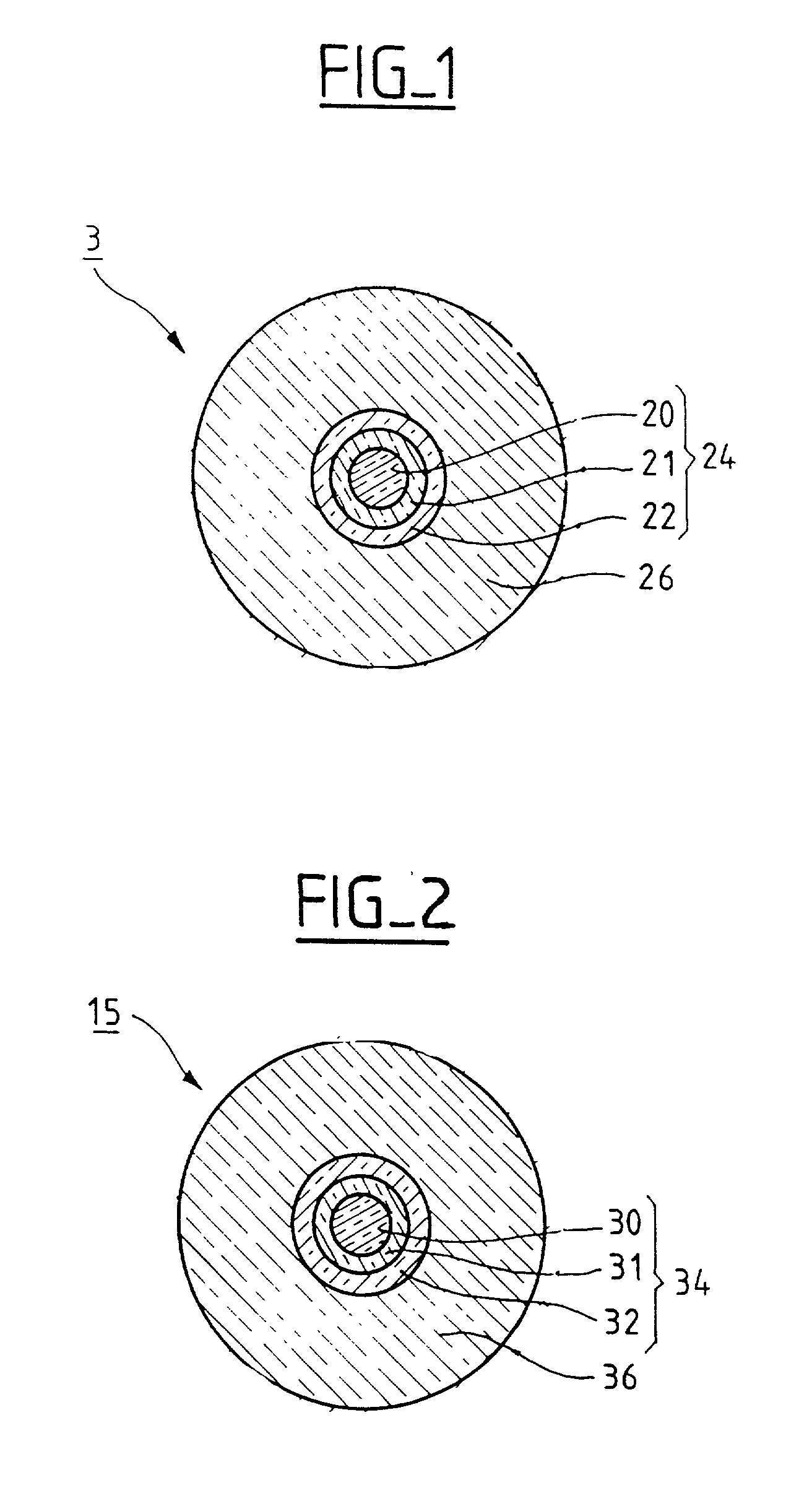Method of manufacturing large capacity preforms by MCVD
a technology of mcvd and preforms, which is applied in the direction of glass making apparatus, manufacturing tools, instruments, etc., can solve the problems of increasing the requirements for the purity of the substrate tube material, the deposition rate of mcvd is limited, and the layer can be very thin, so as to achieve the effect of large capacity and less expensiv
- Summary
- Abstract
- Description
- Claims
- Application Information
AI Technical Summary
Benefits of technology
Problems solved by technology
Method used
Image
Examples
Embodiment Construction
[0037] A primary preform 24 shown in FIG. 1 is made, for example, using the MCVD method by depositing inner layers based on optionally-doped silica to form an optical core 20 and inner cladding 21 inside a substrate tube 22. In order to manufacture the preform, a substrate tube 22 is used that is made of chlorine-doped silica in order to reduce the presence of OH groups, and that is also doped with fluorine at an equivalent concentration. The mass concentration of fluorine preferably satisfies the following relationship: 0.25*XCl<XF<4*XCl.
[0038] It has been found that the presence of fluorine influences the refractive index of the fiber by two distinct mechanisms. The first mechanism whereby fluorine doping reduces refractive index is purely physical and is associated with the material being modified. The interaction between light and the doped material is modified. This property is made use of when it is desired to obtain a low index, e.g. for fibers having depressed-index inner cl...
PUM
| Property | Measurement | Unit |
|---|---|---|
| diameter | aaaaa | aaaaa |
| temperature | aaaaa | aaaaa |
| concentration | aaaaa | aaaaa |
Abstract
Description
Claims
Application Information
 Login to View More
Login to View More - R&D
- Intellectual Property
- Life Sciences
- Materials
- Tech Scout
- Unparalleled Data Quality
- Higher Quality Content
- 60% Fewer Hallucinations
Browse by: Latest US Patents, China's latest patents, Technical Efficacy Thesaurus, Application Domain, Technology Topic, Popular Technical Reports.
© 2025 PatSnap. All rights reserved.Legal|Privacy policy|Modern Slavery Act Transparency Statement|Sitemap|About US| Contact US: help@patsnap.com


